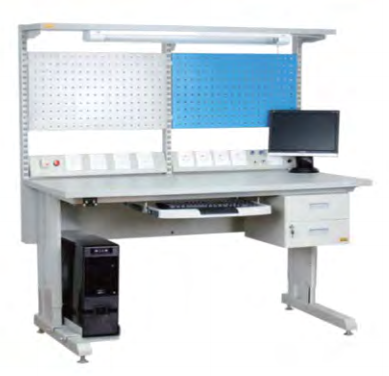The electrical manufacturing sector depends on proper quality control methods along with strict adherence to regulations throughout its rapidly changing environment. The achievement of optimal standards depends heavily on Electrostatic Discharge (ESD) workstations. The purpose of ESD workstations is to shield sensitive electronic components from electrostatic discharge-related damage. The article investigates the vital role ESD workstations play to improve product reliability and compliance regulation fulfillment.
Preventing Component Failure
Prevention of component failure represents the main role ESD workstations serve through their abilities to reduce electrostatic discharge threats. The electrical charging process between two objects called ESD generates sudden electric current discharges that develop during electronic component creation and use. Small electrostatic discharges produce devastating harm to semiconductor devices and cause their malfunctions or failure.
ESD workstations contain anti-static flooring and conductive wristbands combined with grounded tables as protective elements. The implemented features eliminate static discharges created through equipment along with personnel activity. The ability of ESD workstations to neutralize electrostatic charges makes electronic components safer from damage thus improving the quality reliability of final products.
Improving Quality Assurance Procedures
Keeping high standards in electronic manufacturing requires the implementation of integral quality assurance (QA) procedures. ESD workstations create an enveloped environment to protect sensitive components from ESD-related failure during handling operations and support better quality assurance procedures. The controlled operation space is necessary to maintain precise electronic device evaluation and assessment along with distribution processes.
When ESD workstations are used repeatedly they provide uniformity which results in the ability to repeat quantitative procedures. Manufacturers achieve better test results and match tighter tolerances because they remove electrostatic discharge variables from their production methods. The production process results in superior quality products along with lower rework quantities and scrap waste and improved customer contentment.
Meeting Compliance Regulations
Understanding Regulatory Requirements
Electronics manufacturers must follow every regulation and standard enforced by their industry without exception. The International Electrotechnical Commission (IEC) alongside the American National Standards Institute (ANSI) both have established strict ESD protection standards. The workplace needs electrostatic hazard control measures which are specified in standards IEC 61340-5-1 and ANSI/ESD S20.20.
The correct implementation of all regulatory requirements becomes essential for manufacturers to escape penalties while avoiding product recalls together with protecting their business reputation. ESD workstations provide manufacturers with an easy method to implement ESD protection through their manufacturing operations that fulfills these demanding standards. The purchase of ESD workstations helps manufacturers fulfill their regulatory obligations.
Documenting and Demonstrating Compliance
The ability to document compliance along with demonstrating readiness during auditing processes is mandatory for manufacturers to meet. SD workstations support the ESD control process through a standardized operational framework. An effective ESD control system needs complete records for ESD training alongside workstation inspection results and equipment calibration data to achieve proper functionality.
Monitors present inside ESD workstations automatically monitor compliance factors that include both surface ground integrity and wrist strap resistance levels. Monitoring solutions from these systems produce documentation used to show continued compliance to regulators. Accurate record maintenance together with ESD workstation advanced features allows manufacturers to succeed in audits and inspections while demonstrating their dedication to quality control standards.
Conclusion
The quality control and regulatory compliance responsibility played by ESD workstations reaches its maximum importance in electronics manufacturing because of competitive demands. High-quality electronic devices result from ESD workstations which stop component failure and enhance quality assurance procedures and regulatory compliance. Manufacturers who focus on ESD protection and acquire ESD workstations will both fulfill market requirements and maintain regulatory standards and develop an exceptional reputation.







